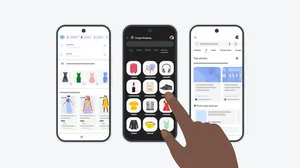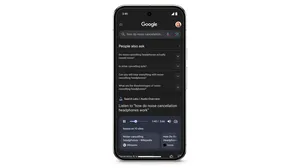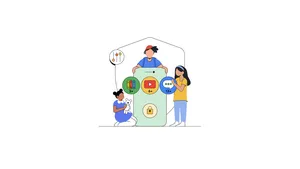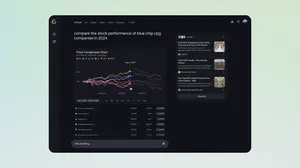Our work on the 2020 U.S. election
It’s been over a month since polls closed in the U.S. 2020 election, and more Americans voted in this election than in any recent Presidential race. In the months—and years—leading up to this cycle, our teams worked hard to create tools that help voters find authoritative information about the election, educate campaigns on how to connect with voters and equip them with best-in-class security features, and protect our platforms from abuse.
After Election Day, as votes were still being counted, we continued this work to show timely election results from The Associated Press (AP) on Google. We also enforced a Sensitive Events ads policy after polls closed, temporarily pausing more than 5 million ads referencing the U.S. 2020 election, the candidates, or its outcome as election results were certified. This week, we are lifting this pause and allowing advertisers to continue running election-related ads on our platforms, as long as they comply with our global advertising policies.
Record numbers of voters engaged with Google tools
We know that people turn to Google to look for information on a variety of topics, and the U.S. 2020 election would be no different. In fact, this U.S. election cycle saw all-time highs in searches for civics-related topics. We worked to create and launch features that would help people find the information they needed to participate in the democratic process. We introduced several features to help voters find information about how to register and how to vote in their states, and as the election neared, we also helped people find polling and ballot drop off locations. Across our products, these features were seen nearly 500 million times.
We worked with non-partisan, third-party data partners, such as Democracy Works, which aggregates official data directly from state and county election administrators, and we linked to state government official websites for more information. Using this data, we also made it easy for people to quickly find nearby voting locations in Google Maps, along with information about how far they were, how to get there, and voting hours. From mid-October through Election Day, we added more than 125,000 voting locations in Google Maps.
We also showed “how to register” and “how to vote” reminders to all our U.S. users directly on Google Search, Maps and YouTube, to help everyone across the country find the information they needed to register to vote, find their voting locations, and cast their ballots. These reminders were seen over 2 billion times across our products. And starting on Election Day, we worked with the AP to provide real-time election results for relevant searches on Google. This results feature had more than six times the number of views in 2020 as in 2016. Additionally, YouTube linked to this results feature in its election results information panel, which was shown over 4.5 billion times.
How we helped educate and protect campaigns
We also focused on helping campaigns and elected officials effectively use Google and YouTube products to reach voters and on helping them enhance their election security. As part of our Civics Outreach Virtual Training Series, Google held 21 training sessions for over 900 candidates, campaigns, public officials, and nonprofit leaders. Overall, we held 45 group and individual trainings to help more than 2,900 election workers learn to use Google tools to amplify their message and better connect with voters through events like digital town halls, debates and virtual campaign rallies.
And as a part of our Election Cybersecurity Initiative with the University of Southern California’s Annenberg School, nearly 4,000 elected officials, secretaries of state, campaign staffers, political party representatives, and state election directors in all 50 states received training on ways to secure their information and protect their campaigns against cyberattacks. At the start of the 2020 election season, we partnered with Defending Digital Campaigns (DDC) to give any federal campaign access to free security keys—the strongest form of two-factor authentication. We helped DDC distribute more than 10,500 Advanced Protection kits. Now, we continue to educate campaigns and newly elected officials about digital security and encourage them to enroll in our Advanced Protection Program.
Protecting our platforms from abuse
In the years leading up to the 2020 election, we made numerous enhancements to protect the integrity of elections around the world and better secure our platforms: we introduced strict policies and restrictions around who can run election-related advertising on our platform; we launched comprehensive political ad libraries in the U.S., the UK, the European Union, India, Israel and New Zealand; we developed and implemented policies to prohibit election-related abuse such as voter suppression and deceptive practices on platforms like YouTube, Google Ads, Google Maps and Google Play; our Threat Analysis Group (TAG) launched a quarterly bulletin to provide regular updates on our work to combat coordinated influence operations across our platforms and flagged phishing attempts against the presidential campaigns this summer; and we worked closely with government agencies, including the FBI’s Foreign Influence Task Force, and others companies to share information around suspected election interference campaigns.
And long before any voting in this election started, our global Trust and Safety teams were already working through possible threat scenarios and abuse vectors related to the election. These teams work in a variety of roles to help develop and enforce our policies in an apolitical and non-partisan way, monitor our platforms for abuse, and protect users from everything from account hijackings and disinformation campaigns to misleading content and inauthentic activity. We estimate that we spent at least $1 billion over the past year on content moderation systems and processes. We continue to invest aggressively in this area.
The job of protecting our platforms from abuse is always a top priority, but especially during sensitive times like elections. Our election integrity work may not directly drive Google’s business, but it’s a crucial part of our responsibility to our users and to the democratic process. That’s why our teams are already looking at what's coming up next—including 2021 elections in the U.S., the Netherlands, Japan, Israel, Ecuador and many other countries.







